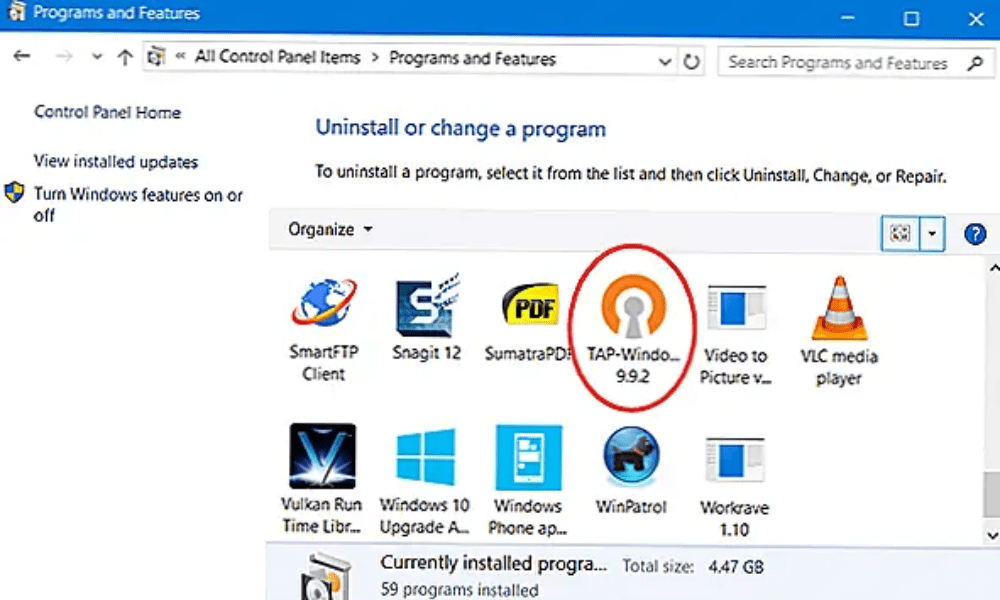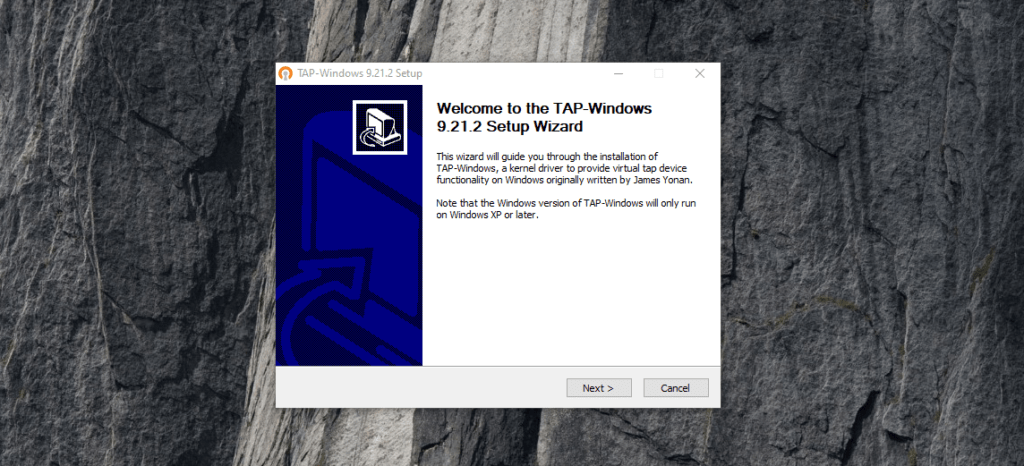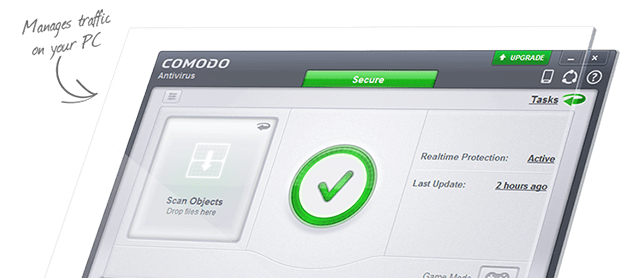
TAP- Windows is an essential part of using a VPN on Windows . But do you know what it is exactly; what is it for? Should you uninstall it?
TAP- Windows is a virtual network driver that allows VPN clients to connect to the Internet privately. It is installed automatically by most VPN software and appears in the device manager under the name “TAP- Windows Adapter V9”. It is not a virus, but it can sometimes cause connection problems or activate for no reason. It can be uninstalled easily if necessary

The TAP- Windows allows you to create a secure tunnel between your computer and the VPN server , hiding your real IP address and encrypting your data. So you can access websites blocked in your region, protect your online privacy and avoid hacker attacks.
The TAP- Windows is compatible with most Windows , from Windows XP to Windows 10. There are two versions of the driver, depending on the version of Windows you are using:
- Under Windows XP , the NDIS 5 driver (tap- windows , version 9.9.x)
- Under Windows Vista / 7 / 8 / 10, the NDIS 6 driver (tap- windows , version 9.21.x)
How to install and uninstall the TAP-Windows adapter?

Installation of the TAP- Windows is generally done automatically during the installation of the VPN software. You don’t need to do this manually unless the VPN software asks you to or you’re having connection issues.
To install the TAP- Windows manually , you can follow these steps:
Download the driver installation file from the official windows : https://swupdate.openvpn.org/community/releases/tap-windows-9.21.2.exe

- Run the file and follow the on-screen instructions

- Restart your computer if necessary
To uninstall the TAP-Windowsadapter, you can follow these steps:
- Open Device Manager by pressing Windows + R keys and typing devmgmt.msc

- Expand the Network Adapters section and right-click on the TAP-Windows adapter
- Select Uninstall device and confirm

- Restart your computer if necessary
You can also uninstall the TAP-Windows adapter from the Control Panel, by going to Programs and Features and searching for Tap-Windows.
How do I troubleshoot TAP-Windows adapter issues?

Sometimes the TAP- Windows may not work properly or may interfere with your Internet connection . Here are some possible solutions to resolve these issues:
Solution 1 Windows Adapter is enabled in Device Manager. If it is disabled, right-click it and select Enable Device .
Solution 2 : Verify that the TAP- Windows does not have conflicts with other network adapters. If there is a yellow exclamation mark next to its icon, right-click it and select Fix Problems .
Solution 3 : Verify that the TAP- Windows has a valid IP address. For that :
1/ Open a command prompt by pressing Windows + R keys and typing cmd.
2/ Then type ipconfig /all and check that the TAP-Windows adapter has an IP address starting with 10.xxx or 172.xxx or 192.168.xx

3/ If this is not the case, you can try to reset the TAP- Windows by right-clicking on it and selecting Disable device , then Enable device .
Solution 4 : Verify that you are using the latest version of the TAP- Windows . For that :
1/ Right-click on the TAP-Windows adapter and select Properties.
2/ Click on the Driver tab and check the date and version of the driver.
3/ If the driver is outdated, you can update it by clicking Update Driver and following the on-screen instructions.
Solution 5 : Make sure you are using the latest version of VPN software. To do this, open the VPN software and check if there are any updates available. If so, install them and restart your computer if necessary.

Solution 6 : Check that you do not have other VPN software or firewalls blocking the TAP- Windows . To do this, temporarily disable any VPN or security software you have installed on your computer and try connecting to the VPN again.
Solution 7 : Check that you do not have viruses or malware affecting the TAP- Windows . To do this, perform a full scan of your system with an up-to-date antivirus and remove any detected threats.

What are the alternatives to the TAP-Windows adapter?

The Windows adapter is the most common network driver used by VPN software, but it is not the only one. There are other types of adapters that may offer different performance or functionality. Here are some examples :
- The TUN adapter : This is another type of virtual network interface that creates a tunnel at the IP layer (layer 3 of the OSI model). It allows only IP packets to be transmitted between the VPN client and the VPN server, which reduces network load and improves the connection speed. However, it does not support certain protocols like ICMP or ARP, which may limit some features like ping or name resolution.
- The Wintun Adapter : This is a new type of virtual network interface that was developed by the creators of WireGuard, a modern and lightweight VPN protocol. It aims to replace the TAP- Windows by offering better performance, better compatibility and better security. It is based on the NDIS 6 driver and uses advanced techniques like DMA (Direct Memory Access) or WFP ( Windows Filtering Platform) to optimize data transfer between the VPN client and the VPN server.
- The NDIS 6 adapter : This is a type of virtual network interface that uses the latest version of the Network Driver Interface Specification (NDIS) driver, which is the standard used by Windows to communicate with network adapters. It provides better performance and stability than the TAP- Windows Windows operating systems and supports IPv4 and IPv6 protocols. .
FAQs
What is the TAP-Windows V9 adapter?
Windows Adapter V9 is the latest version of TAP- Windows Windows operating systems. It is an NDIS 6 driver that allows VPN software to create a secure tunnel between your computer and the VPN server.
Where can I find the TAP-Windows V9 adapter?
The TAP-Windows V9 adapter is usually installed with the VPN software you are using. You can find it in Device Manager under Network Adapters. You can also download itwindowsfrom the official website: https://swupdate.openvpn.org/community/releases/tap-windows-9.21.2.exe
How to disable the TAP-Windows V9 adapter?
If you are not using VPN software or want to temporarily disable the TAP-Windows V9 adapter, you can do so by following these steps:
- Open Device Manager by pressing Windows keys and typing devmgmt.msc
- Expand the Network Adapters section and right-click on the TAP-Windows V9 adapter
- Select Disable device and confirm
How to repair TAP-Windows V9 adapter?
If you are having VPN connection or Internet access issues due to TAP-Windows V9 adapter, you can try to fix it by following these steps:
- Open Device Manager by pressing Windows + R keys and typing devmgmt.msc
- Expand the Network Adapters section and right-click on the TAP-Windows V9 adapter
- Select Properties and click on the pilot tab
- Click Update the driver and follow the on -screen instructions
- Restart your computer if necessary
What is the difference between the TAP-Windows V9 adapter and the TUN adapter?
The TAP- Windows V9 adapter and TUN adapter are two types of virtual network interfaces that allow VPN software to create a secure tunnel between your computer and the VPN server. The main difference is that the TAP- Windows V9 adapter tunnels at the Ethernet layer (OSI layer 2), while the TUN adapter tunnels at the IP layer (OSI layer 3). ). This means that the TAP- Windows V9 adapter can transmit all types of network packets, including non-IP ones, while the TUN adapter can only transmit IP packets.
What VPN software uses the TAP-Windows V9 adapter?
The TAP-Windows V9 adapter is used by most VPN software that runs on Windows, especially those that use the OpenVPN protocol. Here are some examples of VPN software that uses the TAP-Windows V9 adapter:
- Ivacy : a VPN service that offers strong security, high speed and access to over 1000 servers in over 100 countries.
- NordVPN : a VPN service that offers advanced protection, unlimited bandwidth, and access to over 5,000 servers in over 60 countries.
- ExpressVPN : a VPN service that offers optimal reliability, impressive speed, and access to over 3,000 servers in over 90 countries.
Conclusion
Windows adapter is a network driver that allows VPN software to create a secure tunnel between your computer and the VPN server. Windows operating systems and VPN protocols, but it may also cause connection or performance issues. To avoid these issues, it is important to verify that the Windows Adapter is correctly installed , updated, and configured. If you don’t use a VPN or prefer another type of virtual network interface, you can uninstall the TAP- Windows or opt for an alternative like the TUN Adapter, Wintun Adapter, or NDIS Adapter 6 . We hope this article helped you understand the TAP- Windows and use it effectively. If you have any questions or comments, please let us know!
Before we start with the methods to remove TAP-Windows adapters, we would discuss it’s meaning and functions. The Tap Windows Adapter refers to a virtual network interface required by VPN clients to connect with the VPN servers. This driver is installed in C:/Program Files/Tap-Windows. It is a special network driver used by VPN clients to run VPN connections. Many users simply use a VPN to connect the internet privately. TAP-Windows Adapter V9 immediately installed on your device just after you install the VPN client software. Therefore, many users get shocked by where this adapter came and stored. No matter for what purpose you installed VPN, if it is causing the issue, you should get rid of it.
Many users reported the problem in their internet connection due to this driver. They found that when Tap Windows Adapter V9 is enabled, the internet connection was not working. They tried to disable it but it automatically enables in the next boot. It is really annoying that you cannot connect with the Internet due to these issues. Can we fix this annoying problem? Yes, there are some workarounds to help you in fixing this problem.
Table of Contents
Method 1: Disable & re-enable the Tap Windows Adapter
If the TAP adapter is causing the problem, we would suggest to first disable and re-enable it:
1. Open Control Panel by typing control panel in the Windows Search Bar and click on the search result.
2. Now in Control Panel navigate to Network and Internet Settings.

3. Next, click on Network and Sharing Center to open.

4. On the right pane, click on Change Adapter Settings

5. Right-click on the connection, which is using Tab Adapter and Disable it. Again wait for a few moments, and enable it

Method 2: Reinstall the TAP-Windows Adapter V9
Another workaround is reinstalling the TAP-Windows Adapter V9. It could be possible that the adapter drivers may be corrupted or outdated.
1. First, make sure that you terminate VPN connection and related VPN programs.
2. Press Windows Key + R and type “devmgmt.msc” and hit Enter or press OK to open Device Manager.

3. In the Device Manager, scroll down to Network adapters and expand that menu.
4. Locate TAP-Windows Adapter V9 and check if it has an exclamation mark with it. If it is there, reinstalling the driver will fix this problem.
5. Right-click on the driver option and select the Uninstall Device option.

6. After uninstalling the Windows Adapter V9 driver, you need to reopen the VPN client again. Depending on which VPN software you use, either it will download the driver automatically or prompt you to download the network driver manually.
Also Read: How to set up a VPN on Windows 10
Method 3: How to remove the TAP-Windows Adapter V9
If the problem is still haunting you, no worries, the best way is to remove the VPN program and get connected with your internet. Many users reported that even after removing this driver from their system, it reappeared after every time system reboots. Therefore, if you think that uninstalling Tap Windows Adapter driver is easy from the Device manager, it depends on which VPN software you are using. It happens because many VPN programs that you install act like a startup service that checks missing driver automatically and install it every time you remove it.
Remove TAP-Windows Adapter v9 driver
To uninstall the Tap Windows Adapter V9, you need to navigate to Program Files then Tap Windows and double-click on Uninstall.exe. Thereafter, you need to follow through with the on-screen instructions until you remove the driver from your system.
As we discussed above, many users experience that after uninstalling the driver, it automatically installed once they reboot their system, we need to fix the root cause of this problem. Therefore, after uninstalling the driver, you need to get rid of the program/software that needs it.
1. Press Windows + R and type “appwiz.cpl” and hit Enter which will open Programs and Features window.
2. Now you need to locate the VPN client and uninstall it from your system. If you have tried several VPN solutions earlier, you need to ensure that you delete all of them. Once you will complete this step, you can expect that TAP-Windows Adapter V9 is removed and will not reinstall again when you reboot your system.
Also Read: How to Use iMessage on Your Windows PC?
I hope you are not able to understand what are TAP Windows Adapter and will be able to successfully remove it from your system. But if you still have any queries regarding this guide then feel free to ask them in the comment section.
Many people now rely on virtual private networks (VPNs) to stay secure when using the internet, as privacy and safety are crucial.
If you’ve used a VPN at least once before, chances are you have a file named “TAP-Windows” on your computer. You may also notice that in the Network and Internet section of Windows, you have an adapter named TAP-Windows Adapter V9.
Not sure what this is or why it’s on your system? The following guide will help you learn more.
Let’s get into it.
TAP-Windows Adapter Explained

First and foremost, it’s important to clarify that the TAP-Windows Adapter or Tap-Windows V9 file on your computer is not a virus or malware. If you’re concerned about your safety, you should know that these files appear on your computer after you install a standalone virtual private network client.
Also, you can uninstall TAP-Windows and its related files from your computer, and disable the adapter from the network panel at any time if you didn’t install them willingly. However, doing so may make the VPN service unusable.
But what exactly is the purpose of the TAP-Windows Adapter?
In a shortened and simplified manner, this is a special adapter used by most VPN services to allow them to connect you to the internet privately. When you install most VPNs (this doesn’t apply to browser-based, extension-like VPN products) on your system, they will install the TAP-Windows Adapter too, as it’s crucial for the software’s functionality.
If you’ve installed an antivirus software recently, and it came with a “security package” or something similar that includes a VPN, it may be the reason you have the TAP-Windows Adapter installed on your PC.
Should I Delete TAP-Windows Adapter From My PC?

If you’re not currently utilizing a VPN and didn’t intentionally install software that requires the TAP-Windows Adapter to function correctly, you can uninstall it from your computer without worrying that it’ll disrupt something.
If you do plan to use a VPN, however, you shouldn’t remove TAP-Windows as it’s an essential component of the software you’ll use.
Important Things To Know Before Uninstalling TAP-Windows
If it turns out you didn’t intentionally install the adapter on your PC, rather a program did it for you, and now you wish to uninstall it, here’s what you need to know.
The first and crucial step is to discover which program utilizes the adapter. As stated earlier, it’s mostly a VPN service, but if you didn’t install a separate VPN client, the adapter might have been installed by antivirus software with an extra virtual private network feature.
Once you find which software it’s tied to, make sure it’s not running in the background before initiating the uninstall. You can use the Task Manager to end all processes related to that software. Also, if you have any, disable running VPN clients to avoid possible problems during the uninstall process.
Uninstalling TAP-Windows Adapter
If you decided to uninstall TAP-Windows adapter, here’s how to do that:
Reminder: Before following the steps, make sure all VPN services and antivirus programs that could have a VPN service integrated are disabled. Double-check your Task Manager panel to ensure there aren’t any processes utilizing the TAP-Windows adapter running on your computer.
- Press Windows + S simultaneously on your keyboard to bring up the Windows Search Box.
- Type Device Manager and press Enter.
- Find the Network Adapters category, then click the arrow icon next to the name to expand it.
- Locate the TAP-Windows Adapter on the list, then right-click it and choose Uninstall Device.
- Wait for the process to complete, then reboot your PC.
Now you’ve successfully uninstalled the TAP-Windows adapter from your computer. If you did this for troubleshooting purposes, the easiest way to reinstall it is by opening the VPN service you were using, and the software will detect that the adapter is missing so it will offer you to reinstall it with just the click of a button.
If you weren’t using a VPN and don’t plan to do that in the future, the process ends here, as you no longer have the adapter installed on your computer.
Conclusion
That’s all you should know about TAP-Windows Adapter and its purpose. Depending on your version of Windows, you may see a TAP-Windows Adapter with a different version number next to its name, such as 9.9.x, which is characteristic of older Windows versions.
Bottom line is, if you don’t have any software requiring this adapter for functionality, you are free to uninstall it from your PC. If you are a regular VPN user, you should leave it as it’s a helpful component ensuring your VPN can function properly.
Если вы видите это сообщение, значит, произошла проблема с загрузкой файлов в стилей (CSS) нашего сайта. Попробуйте сбросить кэш браузера (Ctrl+F5).
Если это не поможет, а вы находитесь в регионе, где возможны ограничения интернет-трафика с российских серверов — воспользуйтесь VPN.
|
TAP-Windows это виртуальный сетевой адаптер для создания виртуальной сети. Как правило, эти сети создаются для обхода блокировок или для использования интернета другой страны, а также для подключения к удаленному комп’ютеру. Создает в системе TAP-Windows адаптер утилита OpenVPN, антивирус, некоторые программы-взломщики и др. Иногда в сетевых адаптерах TAP-Windows подключение может создавать и вирус для слежения за пользователем с целью получения конфиденциальной информации. автор вопроса выбрал этот ответ лучшим Знаете ответ? |
The Tap Windows Adapter V9 is a virtual network interface that enables VPN clients to establish a VPN connection. The Tap Windows Adapter V9 driver is installed in:
C:/Program Files/Tap-Windows

Some users have reported issues with their internet connection while the Tap Windows Adapter V9 is enabled or that the adapter re-enables itself automatically after being disabled in Device Manager.
A Windows TAP adapter is a network driver installed by most VPN programs. This adapter typically appears in Device Manager after the initial installation of the VPN client (Hamachi, SoftEther, Cyberghost, etc.). Most VPN suites use this adapter to enable private internet connections.
Depending on your Windows version, you may encounter two versions of Windows TAP drivers:
- NDIS 5 driver (tap-windows, version 9.9.x) – on Windows XP.
- NDIS 6 driver (tap-windows, version 9.21.x) – on Windows 10 / 8 / 7 / Vista.
Should You Reinstall or Remove the Tap Windows Adapter? Here’s When and Why
If you’re using a VPN network connection, you generally don’t need to remove the adapter. However, if you’re experiencing connectivity issues with the VPN connection active, you should investigate and reinstall the Tap Windows Adapter if the driver is corrupted.
If you previously used a VPN but no longer do, the leftover Tap Windows Adapter might cause internet issues. Removing the adapter should fix the problem, but it may reinstall if you keep the VPN software.
How to Reinstall the TAP-Windows Adapter V9
If you cannot connect to a VPN network, check if the Tap adapter is installed correctly and reinstall it if corrupted.
- Terminate the VPN connection and close the VPN program.
- Open a Run window (Windows key + R), type “devmgmt.msc“, and hit Enter to open Device Manager.
- In Device Manager, expand Network adapters.
- Locate Tap – Windows Adapter V9. If it has an exclamation mark, right-click on the driver and select Uninstall device.
- Open your VPN client again. It will either prompt you to install the missing network driver or it will automatically install it.
Note: If your VPN software shows a “missing driver error” without reinstalling the driver, reinstall the entire VPN client. Alternatively, visit this OpenVPN link (here), scroll down to Tap-Windows, and download the installer.

Return to Device Manager and check if the exclamation icon is removed. If not, seek support from your VPN client or consider a different provider.
How to Remove the TAP-Windows Adapter V9
Removing the Tap Windows Adapter driver may require additional steps if it reappears after uninstallation due to VPN software startup services. To uninstall the Tap Windows Adapter V9 driver:
Go to Program Files > Tap-Windows, and double-click uninstall.exe. Follow the prompts to remove the driver.
If the driver reappears, you must remove the VPN software:
- Open a Run window (Windows key + R), type “appwiz.cpl“, and hit Enter to open Programs and Features.
- Locate and uninstall the VPN client. If you have tried multiple VPNs, remove all until no software requires the TAP Windows Adapter V9.
Kevin Arrows
Kevin Arrows is a highly experienced and knowledgeable technology specialist with over a decade of industry experience. He holds a Microsoft Certified Technology Specialist (MCTS) certification and has a deep passion for staying up-to-date on the latest tech developments. Kevin has written extensively on a wide range of tech-related topics, showcasing his expertise and knowledge in areas such as software development, cybersecurity, and cloud computing. His contributions to the tech field have been widely recognized and respected by his peers, and he is highly regarded for his ability to explain complex technical concepts in a clear and concise manner.






